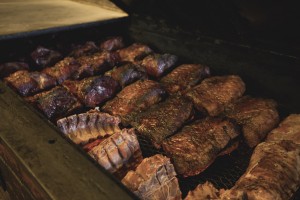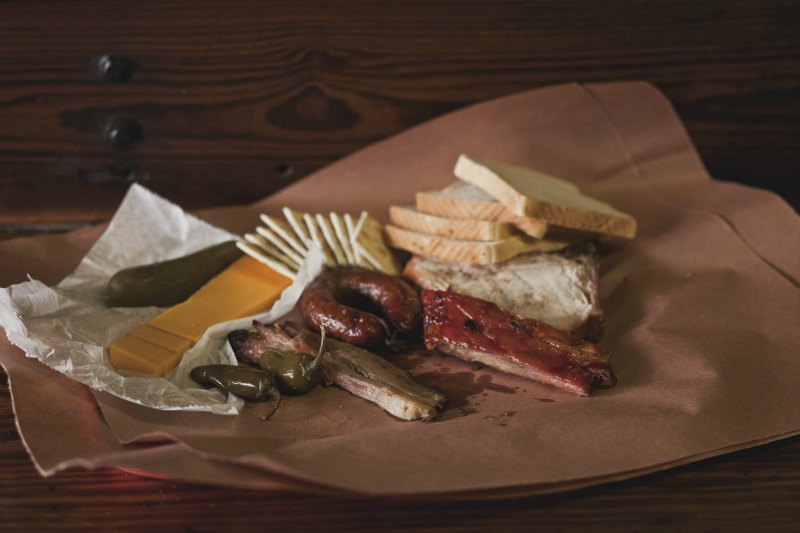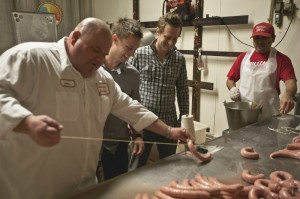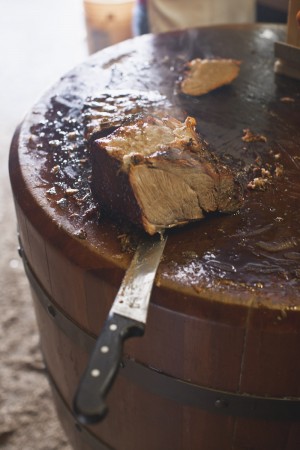Williams-Sonoma’s Fire Smoke & Flavor Tour kicked off at Smitty’s Market in Lockhart, Texas, the heart of the central Texas barbecue belt. There, beef is king, sauce is available only upon request and post oak wood smoke fuels the fire. Barbecue styles vary from region to region, so read on to learn what sets Texas apart.
Authentic Texas barbecue is rooted in three different groups: European immigrants, freed slaves and Mexicans. In the 19th century, Czechs, Germans and Hungarians immigrated to Austin County, bringing with them their knowledge of making sausages and smoking meats, both common techniques back home.
Smoking meats gave birth to the trinity of Texas barbecue: brisket, ribs and sausages. In fact, Texas is the only region in our barbecue tour that specializes in homemade sausage.
We visited central Texas, where post oak is the wood of choice and brisket is sliced, not chopped. Even within Texas, styles differ: In the east, barbecue is chopped, and hickory and pecan woods are used for smoking. It’s “cowboy style” in the west, where the pit is filled with mesquite wood and meat is cooked over direct heat.

2. The Heat
All smokers are different, but the one they use at Smitty’s Market is traditional in Texas. The fire burns outside the smoker box, drawing the smoke and heat in, while the meat cooks over indirect heat at about 400 degrees.
As chef Michael Voltaggio noted, “There’s no thermometer, there’s only fire. You have to know what you’re doing to get the product that they’re trying to achieve.”
3. Secrets of Seasoning (or Lack Thereof)
In Texas it’s all about the meat, and many places don’t even serve barbecue sauce. Seasonings are generally very light, without even a dry rub; salt, black pepper and cayenne pepper are traditional flavorings for meat.
“I think there’s a lot of care and attention that’s paid to this meat, but with nothing really to mask it,” says Voltaggio.
If restaurants do serve sauce, it’s thin and tart, flavored with vinegar, chili powder, cumin, and a tiny bit of tomato or ketchup. Some of the best versions can’t be kept for long periods of time because they include meat drippings, so get it from a quality kitchen. The sauce can be eaten with almost everything, from sausage to chicken.
Brisket originally became the cornerstone of Texas barbecue because, after the Civil War, beef was cheaper than pork. Plus, brisket was too tough to be cooked by any traditional methods other than low and slow. Tip: you always want fatty brisket, not lean, for barbecuing.
5. On the Side
In Texas dining rooms, you’ll find simple sides like pickles, jalapeños, cheese, crackers and plenty of white bread.



